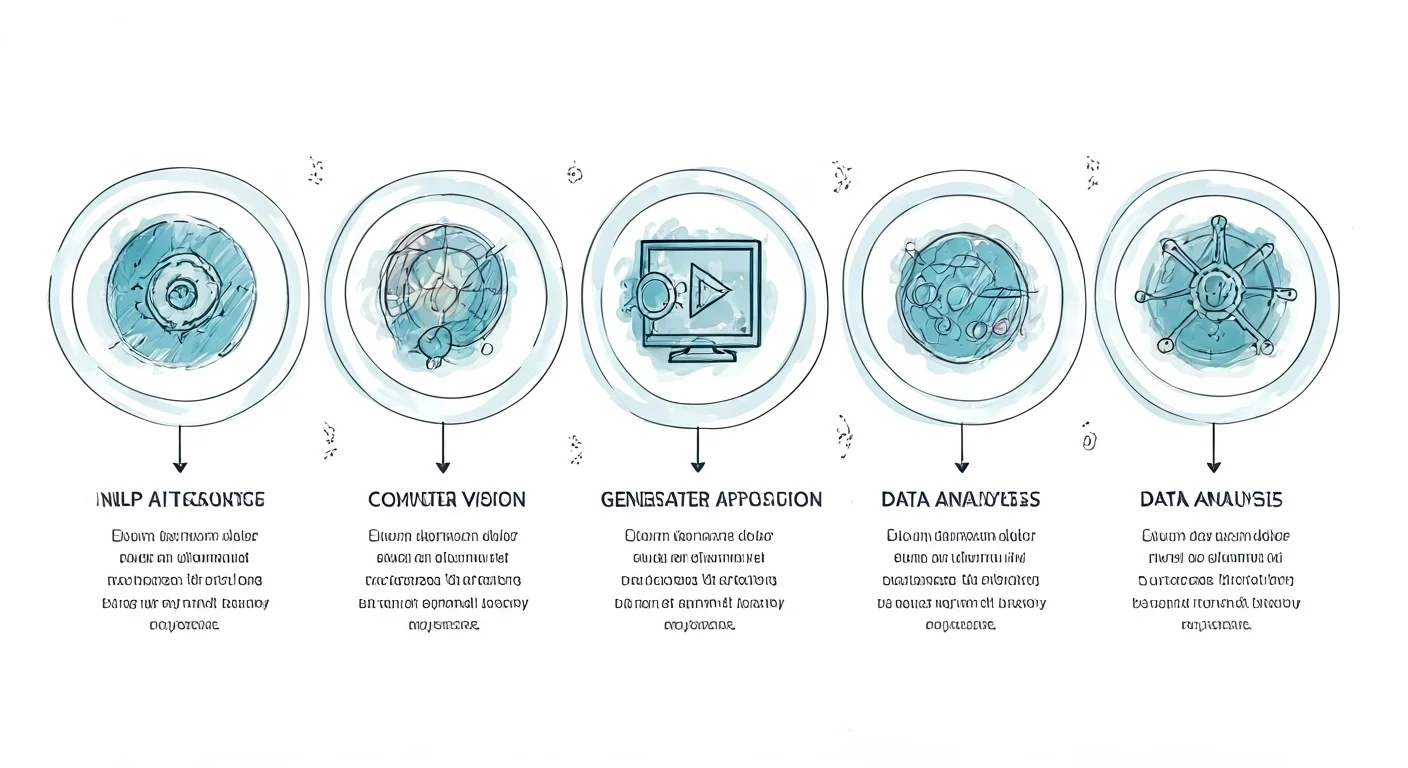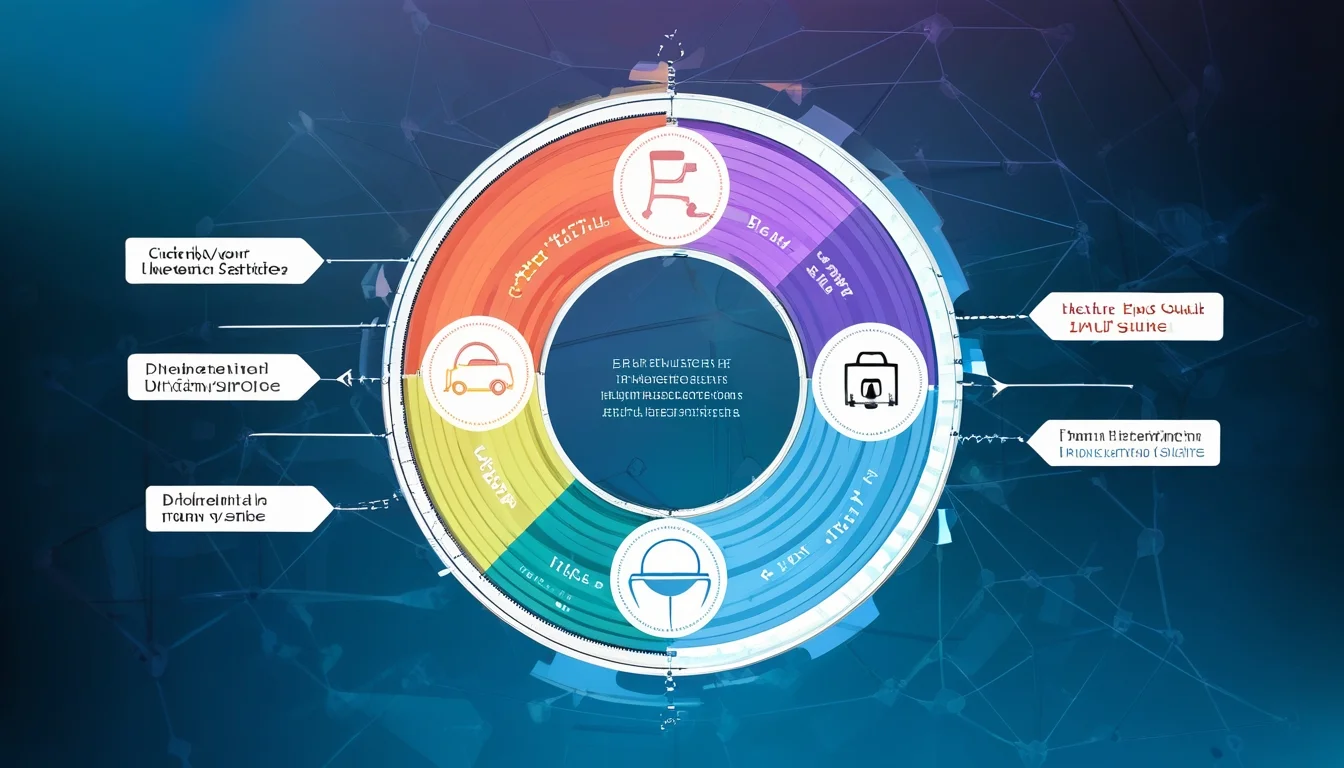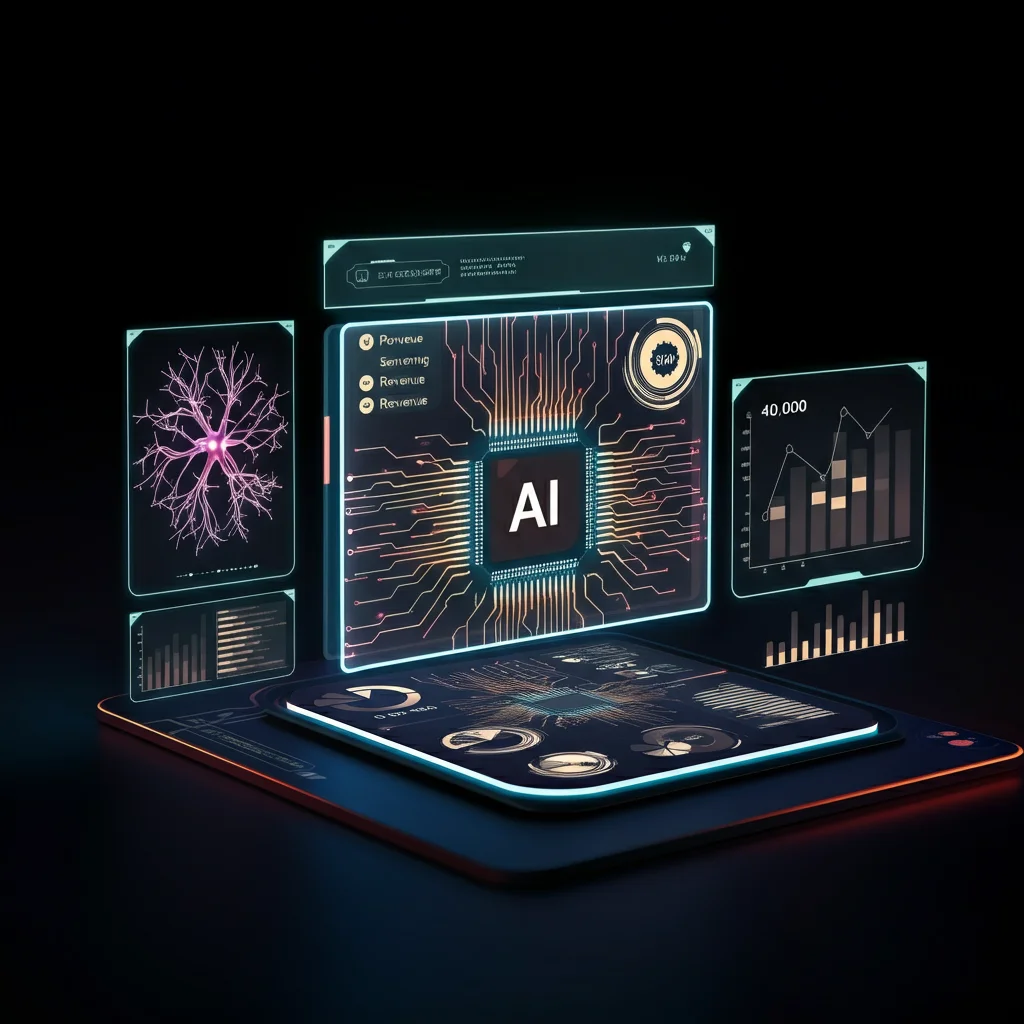Artificial intelligence (AI) is no longer a distant, theoretical concept confined to research labs. Today, it stands as the most transformative force revolutionizing industries, reshaping business models, and unleashing an unprecedented wave of entrepreneurial opportunities. From automating mundane, time-consuming tasks to delivering precise predictive insights, AI-based services are in soaring demand across every sector.
If you're an ambitious developer, a forward-thinking entrepreneur, a seasoned tech enthusiast, or a consultant eager to harness AI's immense profit potential, this comprehensive guide is your blueprint. We will demystify the core AI technologies that are making waves, provide compelling examples of AI services you can develop, and outline proven strategies to effectively monetize them.
It's time to stop just observing the AI revolution and start leading it. Let's unlock the immense potential of AI to not only deliver unparalleled value to businesses but also to build your own thriving, future-proof venture.
Understanding the Core: AI Technologies You Can Leverage for Profit

To strategically create AI-based services that solve real problems, you first need to identify the right underlying technologies that align with your niche or your target audience's specific needs. Many of these technologies are accessible via powerful APIs (Application Programming Interfaces) from major cloud providers, lowering the barrier to entry even for those not deep in traditional AI development.
Natural Language Processing (NLP): Understanding Human Language NLP enables machines to comprehend, interpret, and generate human language in various forms (text, speech).
Service Applications:
Advanced Chatbots & Virtual Assistants: Beyond basic FAQs, develop AI agents for complex customer support, lead qualification, or personalized onboarding (e.g., using OpenAI's GPT models or Google's Dialogflow).
Sentiment Analysis Tools: Create platforms that analyze customer reviews, social media comments, or internal feedback to gauge public opinion and brand perception in real time.
Automated Content Summarization/Generation: Offer services that summarize lengthy documents, generate meta descriptions for websites, or assist in drafting personalized emails based on user data.
Legal Document Review: AI for rapidly scanning contracts, identifying key clauses, or flagging inconsistencies.
Machine Learning (ML): Learning from Data for Predictions & Decisions ML focuses on training machines to learn patterns from data and make predictions or decisions without explicit programming.
Service Applications:
Predictive Analytics Dashboards: Build tools for sales forecasting, predicting customer churn, optimizing inventory levels, or anticipating equipment failures in specific industries (e.g., leveraging scikit-learn, TensorFlow, or cloud ML services).
Fraud Detection Systems: Develop custom ML models to identify anomalous transactions for financial institutions or e-commerce platforms.
Personalized Recommendation Engines: Create services that offer hyper-personalized product or content recommendations for online retailers, streaming services, or content platforms.
Credit Scoring & Risk Assessment: ML models to evaluate creditworthiness for lenders.
Computer Vision: Teaching Machines to "See" This technology enables machines to interpret visual data from the real world, such as photos, videos, or live camera feeds.
Service Applications:
Automated Quality Control: Develop AI systems that inspect products on assembly lines for defects, ensuring consistent quality in manufacturing.
Security & Surveillance Analytics: Create solutions for object detection, anomaly detection, or facial recognition in surveillance footage (e.g., retail loss prevention, access control).
Medical Image Analysis: Offer AI tools to assist radiologists in identifying anomalies in X-rays, MRIs, or CT scans.
Agricultural Monitoring: AI for detecting crop diseases, assessing plant health, or counting livestock from aerial imagery.
Generative AI: Creating Brand New Content Generative AI tools create novel content (text, images, videos, audio, code) based on input data or prompts. This area is where tools like ChatGPT and Midjourney shine.
Service Applications:
AI-Powered Content Studios: Offer services that generate marketing copy, product descriptions, ad variations, or even entire blog post outlines (e.g., using OpenAI's APIs, open-source models).
Custom AI Art & Design Agencies: Create unique visual assets for branding, advertising, game development, or digital art marketplaces using tools like Midjourney, DALL-E, or Stable Diffusion.
Personalized Video/Audio Creation: Develop tools that generate short, personalized marketing videos or audio messages at scale.
Code Generation & Debugging Tools: Offer AI assistants that help developers write boilerplate code, suggest improvements, or debug errors.
AI for Data Analysis & Business Intelligence: Unlocking Insights AI can sift through vast, complex datasets to find hidden trends, correlations, and actionable insights that humans might miss, driving strategic decision-making.
Service Applications:
Automated Business Intelligence Dashboards: Build platforms that automatically analyze sales data, customer behavior, or operational metrics and present actionable insights in real time.
Customer Segmentation & Personalization: Develop AI models that segment customer bases more effectively, enabling hyper-targeted marketing campaigns.
Market Research & Trend Spotting: Create tools that analyze news, social media, and market data to identify emerging trends and competitive intelligence.
Financial Modeling & Portfolio Optimization: AI-driven tools to assist in complex financial forecasting or optimizing investment portfolios.
Pro Tip: Don't try to master all of them. Focus on a specific AI technology that genuinely excites you and complements your existing skills. Then, pair it with a highly demanded application or a pressing problem in a particular industry to get started. Leveraging powerful APIs (like OpenAI's API for GPT models, Google Cloud AI, AWS AI Services, and Azure AI) allows you to build sophisticated services without deep machine learning expertise.
How to Build AI Services Around Real Industry Needs: Your Strategic Approach

The most successful AI businesses aren't built on technology alone; they're built on solving critical, real-world problems. Identifying and addressing the genuine needs of your target market is paramount. Here’s a step-by-step approach to tailoring your AI services to deliver tangible value:
Step 1: Choose Your Industry (Where AI Can Make the Biggest Impact)
While AI can disrupt nearly every sector, some industries are more ripe for innovation or possess higher growth potential for new AI solutions.
High-Potential Sectors: Healthcare, Finance (FinTech), E-commerce & Retail, Logistics & Supply Chain, Education (EdTech), Marketing & Advertising, Legal, Manufacturing, and Customer Service.
Example: Instead of just "AI in healthcare," narrow it down: "AI for predictive diagnostics in diabetes management" or "AI for patient intake automation in dental clinics." This specificity helps with targeting.
Step 2: Identify Acute Pain Points (The Problems AI Can Solve)
This is the core of your value proposition. What inefficiencies, bottlenecks, or unsolved challenges do businesses in your chosen industry face?
Market Research Methods:
Direct Interviews: Talk to professionals, business owners, and employees within your target industry. Ask about their biggest daily frustrations, manual tasks, or data challenges.
Industry Reports: Consult market research reports, white papers, and trend analyses from reputable sources.
Competitor Analysis: Look at existing solutions (AI or non-AI). Where do they fall short? What common complaints do their users have?
"Jobs-to-be-Done" Framework: Focus on the "job" a customer is trying to get done and how AI can help them do it better, faster, or cheaper.
Example: Retailers struggle with effectively personalizing marketing at scale and analyzing vast customer data; an AI-powered recommendation engine coupled with dynamic content generation could directly address this. Small businesses spend too much time on manual data entry; an AI-driven data extraction and categorization service could be a lifeline.
Step 3: Develop a Minimum Viable Product (MVP)—Start Small, Prove Value
Don't aim for a perfect, feature-rich product from day one. Build an AI-powered solution with only the core features necessary to solve your identified pain points.
Focus on Core Functionality: What is the absolute minimum AI capability you need to demonstrate value? (e.g., for a chatbot, it's accurately answering 5-10 common FAQs; for a predictive tool, it's a reliable forecast on a limited dataset).
Leverage Existing AI APIs: For your MVP, it's often more efficient to integrate with existing powerful AI models via their APIs (e.g., OpenAI API for text, Google Cloud Vision API for image analysis) rather than building models from scratch.
Gather Early Feedback: Get your MVP into the hands of target users quickly. Gather their feedback, learn what works and what doesn't, and iterate rapidly. This agile approach minimizes wasted resources and ensures market fit.
Example: Instead of a full-fledged customer service AI, create a basic chatbot for handling customer FAQs on a specific product line. Expand features like order tracking or personalized recommendations later.
Step 4: Prioritize User Experience (UX)—AI Must Be Intuitive
No matter how sophisticated or advanced your AI solution is, it won't succeed if it’s difficult or frustrating to use. A powerful AI model hidden behind a clunky interface will deter adoption.
Simplicity: Design intuitive interfaces that simplify complex AI interactions. Users shouldn't need to understand the underlying algorithms.
Clear Value Proposition: Ensure users immediately understand what your AI service does and how it benefits them.
Onboarding: Provide clear onboarding flows, tooltips, and documentation to help users get started quickly.
Feedback Loops: Design the UI to provide clear feedback on AI performance or limitations.
Example: An AI-powered business intelligence platform might have advanced analytics on the backend, but its front-end dashboard must be clean, customizable, and visually present insights clearly with minimal clicks.
Step 5: Plan for Scalability—Grow with Demand
From day one, design your AI service with future growth in mind. A successful service will attract more users, requiring more computational power and data-handling capabilities.
Cloud-Based AI Platforms: Utilize leading cloud providers like OpenAI (for their API services), Google Cloud AI, Amazon Web Services (AWS AI), and Azure AI for their robust, scalable infrastructure and pre-built AI services. These platforms allow you to pay for what you use and scale seamlessly as your customer base expands.
Modular Architecture: Design your AI service with a modular architecture, allowing you to easily add new features, integrate more data sources, or swap out AI models as technology evolves.
Cost Optimization: Understand the cost implications of scaling your AI usage. Optimize your code and model calls to be efficient.
Making Your AI Services Profitable: Monetization Strategies
Once you've meticulously created a valuable AI-based service that solves a real problem, the next critical step is ensuring its profitability. Here are proven ways to monetize your expertise and make money with AI effectively:
Subscription-Based Model (SaaS - Software-as-a-Service):
Description: Offer monthly or yearly subscriptions for access to your AI service. This is the most common and robust model for SaaS AI platforms, providing predictable recurring revenue. Tiers (Basic, Pro, Enterprise) based on features, usage limits, or user seats are common.
Ideal For: Any AI tool with ongoing utility (e.g., predictive analytics, content generation, monitoring tools, CRM integrations).
Example: A subscription-based AI-powered sentiment analysis tool for marketing agencies; a monthly fee for an AI writing assistant.
Pay-Per-Use/Consumption-Based Model:
Description: Charge users based on how much they utilize your AI service (e.g., per query, per API call, per image generated, per GB of data processed). This offers flexibility and can attract users with varying needs.
Ideal for services with variable usage or where a flat fee might deter smaller users (e.g., real-time translation, complex image processing, large-scale data analysis).
Example: Charging per query for an AI language model integrated into a business's internal knowledge base or per facial recognition scan for a security system.
Licensing and Customization:
Description: Offer licenses to larger enterprises or businesses that want to deploy your core AI solution within their own infrastructure or as a white-label product. Provide options for deep customization to meet their specific, complex operational needs. This often involves significant upfront fees plus maintenance.
Ideal for: niche AI solutions that are highly valuable to large organizations or core AI models that can be adapted.
Example: Licensing a customized AI chatbot tailored to a specific industry (e.g., healthcare providers, legal firms) for internal use; selling a licensed AI-powered fraud detection module to a bank.
Consulting and Implementation Services:
Description: Beyond the product itself, monetize your specialized AI expertise by consulting with companies on how to best identify, integrate, deploy, and optimize AI solutions into their existing workflows. This can include strategy, data preparation, custom model training, and post-deployment support.
Ideal For: Experts with deep AI knowledge and strong business acumen. It can be a great starting point before productizing.
Example: An AI consultant advising a manufacturing company on implementing computer vision for quality control; a team helping an e-commerce business deploy and fine-tune an AI recommendation engine.
Freemium Model:
Description: Attract a large user base by offering a free, basic version of your AI service. Then, provide premium, feature-rich options, advanced analytics, higher usage limits, or dedicated support for paying customers.
Ideal for services with broad appeal where the core functionality can be offered free, but advanced features provide significant additional value.
Example: Offer free AI-powered grammar checks but include advanced paraphrasing, tone suggestions, and plagiarism detection for premium users (like Grammarly); provide a free limited version of an AI content generator with more words/features available on paid tiers.
Real-World Success Stories: Inspiration for Your AI Venture
These examples highlight the diverse ways AI-based services are being monetized and integrated across various industries, providing powerful inspiration for your future venture.
OpenAI (ChatGPT & APIs):
Service: Developed cutting-edge conversational AI (ChatGPT) and powerful generative AI models accessible via API.
Monetization: Employs a freemium model (free access to basic ChatGPT, premium subscription for advanced features like GPT-4, and usage-based pricing for API access for developers).
Insight: Democratized AI capabilities, allowing others to build services on top of their core technology.
Grammarly:
Service: An AI-powered writing assistant that checks grammar, spelling, punctuation, clarity, engagement, and delivery.
Monetization: Utilizes a highly successful freemium model, with free basic checks and premium subscriptions for advanced writing enhancements, plagiarism detection, and tone suggestions.
Insight: Solved a universal pain point (better writing) with an easy-to-use, accessible AI solution.
Canva (Magic Studio/Magic Write):
Service: A graphic design platform that has integrated a suite of generative AI tools (Magic Write for text, Magic Design for templates, Magic Edit for images, etc.).
Monetization: Integrates AI features primarily into its existing subscription-based model (Canva Pro, Canva for Teams), adding immense value to its premium tiers.
Insight: Enhanced an established platform by seamlessly embedding AI, creating a new value proposition for existing users and attracting new ones.
Key Challenges and How to Overcome Them in AI Service Development

Building and scaling successful AI services comes with its own set of unique challenges. Here's what to anticipate and how to strategically tackle them:
Challenge 1: High Initial Development & Infrastructure Costs
AI development can be expensive due to the need for powerful computing infrastructure (GPUs), specialized talent, and often large datasets for training.
Solution:
Leverage Cloud AI Services & APIs: As mentioned, utilize pre-trained models and infrastructure from cloud providers (AWS, Google Cloud, Azure, OpenAI) to significantly lower initial investment and access cutting-edge tech without owning hardware.
Open-Source Frameworks: Utilize open-source ML frameworks (TensorFlow, PyTorch) and pre-trained open-source models (Hugging Face) to accelerate development and reduce licensing costs.
Start Small with an MVP: Focus resources on proving the core value proposition first.
Challenge 2: Ethical Concerns, Data Privacy, and Bias
AI systems raise critical ethical questions, including how data is handled, potential biases in models, and transparency in decision-making.
Solution:
Transparent Data Policies: Implement clear, concise data privacy policies and ensure compliance with regulations (e.g., GDPR, CCPA).
Bias Mitigation: Rigorously test your AI models for biases across different demographics and use diverse, representative datasets. Implement fairness metrics and explainable AI (XAI) techniques where possible.
Human Oversight: Maintain a human-in-the-loop approach for critical AI applications, especially in sensitive areas like healthcare or finance.
Challenge 3: Intense & Rapidly Evolving Competitive Market
The AI boom means a rapidly growing number of new players and solutions entering the market, making differentiation difficult.
Solution:
Hyper-Niche Focus: Instead of broad AI solutions, differentiate yourself by targeting highly specific industries or solving extremely particular pain points.
Superior User Experience (UX): Make your AI service remarkably easy and intuitive to use, even if the underlying technology is complex.
Exceptional Customer Service: Provide unmatched support, building loyalty and positive word-of-mouth.
Unique Data/Domain Expertise: Leverage proprietary data or unique insights into a specific industry to build a more effective AI model.
Challenge 4: Acquiring & Retaining AI Talent
Finding and retaining skilled AI developers, data scientists, and machine learning engineers can be difficult and expensive.
Solution:
Focus on Full-Stack AI Developers: Look for talent that can bridge the gap between AI models and practical applications.
Upskill Existing Team: Invest in training existing developers in AI/ML concepts and tools.
Leverage No-Code/Low-Code AI Platforms: For simpler AI applications, empower non-technical team members to build solutions using platforms that abstract away complex coding.
Challenge 5: Continuous Learning & Adaptability
The AI landscape is evolving at an unprecedented pace. What's cutting-edge today might be obsolete tomorrow.
Solution:
Foster a Learning Culture: Prioritize continuous learning for your team. Stay updated on the latest AI research, tools, and industry trends.
Agile Development: Adopt agile methodologies to rapidly iterate and adapt your AI services based on new technological advancements or market shifts.
Component-Based Approach: Design your AI solutions with modular components that can be easily updated or swapped out without rebuilding the entire system.
Take the First Step: Your Journey to Making Money with AI
The potential to make money with AI-based services is not just vast; it's expanding exponentially. By astutely identifying industry-specific problems, strategically leveraging advanced AI technologies (often via accessible APIs), and adopting robust monetization strategies, you can create innovative solutions that deliver profound real-world value and establish a significant competitive advantage.
Whether you're a seasoned developer eager to dive into machine learning, an entrepreneur keen on solving critical business pain points with NLP, or a visionary looking to build the next generation of generative AI products, the opportunities to innovate, grow, and earn with AI are limitless.
The key, as with any successful venture, is to start. Pick a specific problem, craft a compelling AI solution with an MVP, and scale from there. Who knows? Your AI service could very well become the next big success story, contributing to the AI revolution while building your own sustainable income.



